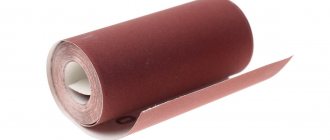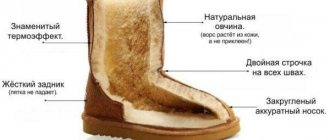Every year, many housewives want to find an effective descaler for their iron. Indeed, regardless of the cost of the device, scale may appear inside, and carbon deposits may appear on the sole. During operation, we rarely use distilled water. Tap water contributes to the appearance of deposits on the inner surface of the device. As a result, the iron does not work as well and may leave stains on clothes.
How to properly use an iron with a steam generator?
Modern models are distinguished by functionality, reliability, and durability. But, unfortunately, manufacturers have still not been able to eliminate the formation of scale or carbon deposits. Housewives deal with such troubles in two ways, such as:
- Prevention of the appearance of unwanted formations.
- Regular use of special products to clean the iron from scale inside.
Many women want to buy the latest model without paying attention to its functionality. And the planned intensity of use of the device should be adequately assessed.
If you use the device as needed (standard use), you should give preference to the basic models. To supply steam to them, select the required mode.
If you need to purchase an iron for frequent use or for processing an impressive volume of laundry at once, it is better to pay attention to devices with a steam generator. Such devices heat up quickly and supply an intense stream of steam.
Cleaning the device is not an easy process. Therefore, it is better to immediately take care of preventing the appearance of scale in the iron.
What and how to wash the inside at home?
During the steaming process, water boils in the iron tank and, as a result, a coating of hardness salts (calcium and magnesium) forms on the heating element.
During operation of the device, sediment gradually accumulates and turns into hard scale , which interferes with the normal functioning of the device.
IMPORTANT! At the first signs of plaque and for preventive purposes, clean the electrical device once every 3-4 months.
Have you ever descaled your iron?
Not really
Self-cleaning
Responsible manufacturers take care of their customers. Many new models can be cleaned without iron descalers. They have a special self-cleaning function, which occurs during several stages:
- Let's study the instructions. We determine which water is best to use when ironing.
- Pour the maximum amount of water inside the device.
- Set the device to the highest heating temperature. We connect the device to the mains.
- We are waiting for the device to heat up. Please pay attention to the moment when the heating automatically turns off.
- We repeat the procedure.
- Disconnect the iron from the power supply.
- Tilt the device into a prepared heat-resistant container (you can use a metal basin), and press the self-cleaning button. The location of this button on the case depends on the manufacturer and model.
The inner surface of the iron is cleaned of plaque and dirt due to the intense release of steam from the holes in the soleplate. After draining all the water at the bottom of the basin, you will be able to see the dirt that has accumulated inside the device.
For more effective cleaning, it is recommended to shake the iron slightly while draining. After cleaning, the iron must be rinsed several times with running water and the device wiped dry.
Using the iron immediately after cleaning is strictly prohibited. After all, it can heat up to an unacceptably high temperature.
Often the instructions do not warn about this, but a very hot device can ruin not only clothes, but also the ironing board. During cleaning, you should also not touch its working surface.
How to clean your iron from scale inside and outside
Let's look at what methods there are to clean the inside of devices.
Self-cleaning function
This function is available in the newest device models. It is a technology for rapid self-cleaning of steam irons when performing the following activities:
- In the instructions you should find a point where it is noted what kind of water should be used.
- Next, the maximum volume of water is poured into the device.
- The maximum heating temperature is set, and the device is connected to the electrical network.
- You need to wait until the iron heats up and then it will automatically turn off.
- After this, the entire process must be repeated a second time.
- While the device goes through two heating and cooling cycles, find a heat-resistant container.
- Carefully tilt the heated device over this tank and activate the self-cleaning function
Interesting! Cleaning the product from dirt and plaque is carried out due to the increased release of steam from the holes on the sole. To remove deposits more effectively, you can shake the iron while draining the liquid.
Specialized descaling products
There is a large selection of products on the household goods market that help fight scale. Let's note some of them:
- Special substance “Antinscale”. It is diluted in water in the ratio indicated in the instructions.
- Chemical cleaners Topperr, Bosch and Filtero 605, which contain organic acid, water and anti-corrosion substances. To obtain a cleaning solution, it is recommended to mix water and product in a ratio of 3:1 (sometimes a ratio of 2:1 is found).
- Top House detergent composition, a solution of which is prepared in a ratio of 100 milliliters of water and 50 milliliters of the composition.
In addition, citric acid dissolved in liquid, as well as mineral carbonated water, are used to combat scale.
Citric acid is one of the ways to clean an iron
Folk remedies for cleaning the soleplate of the iron
To clean the outside of the device, various folk remedies are used, which we will discuss later.
Pencil
Cleaning pencils are produced by different companies and can be purchased at hardware stores.
Typically the pencil is suitable for all types of surfaces. Rules of use:
- The iron must first be heated and then unplugged.
- Gently rub the stained areas with a pencil, without pressing too hard on the surface or touching the sole.
- After a couple of seconds, when the carbon deposits disappear, run the device over the cotton product.
- When cleaning a steam iron, you need to turn on the steam function and use a cotton swab to clean the holes.
Advice! Since an unpleasant aroma is formed during the use of the pencil, it is best to clean it closer to the window.
Vinegar
To clean the device from burnt fabric, you can use 9% vinegar.
If the contamination is new, you should:
- Dilute vinegar in water in a ratio of two tablespoons per glass.
- Dip a cotton wool or cloth into the solution, then wipe the slightly heated surface.
To remove old burn marks, it is recommended to soak a cloth (preferably a towel) in concentrated vinegar.
You can also clean the inside of the iron with vinegar.
Ammonia
Ammonia can also be used to clean carbon deposits from ironing surfaces. First you need to wipe the heated sole with a rag soaked in a solution of ammonia. In case of heavily ingrained contamination, the cooled device should be left overnight on a cloth soaked in the solution. In the morning, simply wipe the surface with a dry cloth.
Soda
Make a solution of baking soda in water, and then dip a cotton swab in it, wet it and wipe the area with carbon deposits. This will soften the contamination. At the end, you need to wipe the surfaces with a dry, clean cloth.
Salt
There are two ways to use salt to clean soles:
- take coarse salt and pour it onto gauze, which needs to be ironed with a heated iron;
- fine salt is poured onto a white paper sheet and smoothed with a heated device.
Salt allows you to clean the ironing surface quickly and efficiently.
Hydrogen peroxide and hydroperite
Hydrogen peroxide or its dry equivalent - hydroperite tablets - can help you clean the sole of the product.
Cleaning is carried out as follows:
- The iron is heating up.
- The working surface is wiped with a cotton pad soaked in peroxide or treated with a hydroperite tablet.
- The remains of the tablet should be removed with a cloth and try to iron the unnecessary item.
Toothpaste
Cleaning the soles using toothpaste is done as follows:
- The device warms up a little.
- Toothpaste is applied to the surface with a medium-hard brush.
- The sole is washed with water.
Recommendation! You should use white toothpaste (not gel) without abrasive additives to avoid leaving scratches.
Removing traces of burnt synthetics or plastic with acetone
Nail polish remover with acetone is often used to remove traces of carbon deposits.
Next, the cotton wool is moistened in the liquid, after which it is used to wipe the contaminated areas and treat the surface with a clean, moistened rag. In addition, the soles are cleaned with laundry soap, paraffin (candle), and also a special Greenfield product.
Before choosing a cleaning method, pay attention to the material from which the sole is made. The sole is traditionally made of aluminum or stainless steel using one of the following types of coating:
- titanium;
- ceramics and glass ceramics;
- Teflon;
- sapphire;
- enamel.
There are a number of recommendations for processing different types of surfaces, here are some of them:
- for devices with ceramic-coated soles, it is recommended to use a pencil or vinegar;
- for treating metal surfaces, it is better to choose soda or toothpaste;
- Teflon coating can be easily cleaned with vinegar, hydrogen peroxide or soap.
Important! Teflon, ceramics and their combinations must not be cleaned with products containing abrasives, as they may cause scratches.
Special means
The modern range of products for caring for household appliances is quite wide. Among them you can find many special anti-scale products for irons. They are used if the device does not have a self-cleaning system. The following tools are especially popular:
- Topper;
- "Antiscale";
- Greenfield;
- Top House.
“Topperr” is a special anti-scale agent for iron, which actively acts on the structure of lime deposits due to its high concentration. To prepare a cleaning product, you need to take 2 parts water and 1 part substance. The solution should be poured inside the iron. The device must be heated in a vertical position and placed on the sole, unplugged. The iron should be left in this state for 2 hours. After the solution is drained, the container is washed well and filled with water. The device is heated and steam is supplied, thus cleaning the soleplate from scale. To remove any remaining limescale, iron some unnecessary fabric.
“Antinscale” is a special product for cleaning the iron from scale. The substance must be diluted with water in the proportion specified in the instructions. The solution is poured into the iron container and the device is connected to the electrical network. The iron should remain in this state for 30 minutes. After cooling, rinse well with clean water.
Greenfield is a special chemical pencil. It is used to clean the ironing surface from carbon deposits and holes from limescale. In this case, you should heat the iron to the wool ironing temperature (more than 1000). Carefully apply a pencil to the sole. After a few minutes, the surface can be wiped with a cotton or linen cloth. After cooling, the ironing surface should be rinsed with water. The disadvantage of this descaling product for irons is the unpleasant strong odor. Therefore, it is necessary to open all windows and ventilate the room well. After all, if you inhale such a smell in a closed room, you can feel dizzy.
Top House. To descale the container, mix 50 ml of detergent and 100 ml of water. The solution is poured into the iron. The device is heated in the “cotton” mode in a vertical state. After heating, you must switch to steam mode and turn the device horizontally. After waiting 10 minutes, drain the solution. The device must be rinsed in steam mode until no more particles of dirt come out of the holes.
Traditional methods
Folk recipes offer many methods that allow you to clean your iron from dirt and scale at home. All the means used are accessible and available in every home.
Salt
Salt has been used to clean dishes for a very long time. It will also help in cleaning the iron.
Salt cleaning methods:
- Heat the iron and rub the stained areas well with a handful of salt wrapped in a piece of cloth. Salt perfectly corrodes all burnt particles.
- You need to mix salt and liquid detergent, apply this mixture to the warm surface of the device and wait about 30 minutes. Then rinse with water.
- Another way: sprinkle a little salt on a cloth or piece of paper, and then iron the salt with a hot iron. All contaminants will remain on the salt.
Salt is also quite effective at removing dirt from the work surface. But it is strictly not recommended to clean the Teflon coating using this method - scratches may appear on it.
Vinegar or alcohol
To clean the working surface of the iron, a 9% solution of vinegar or ammonia is suitable. For effectiveness, it is possible to prepare a mixture of these two ingredients in equal proportions.
Methods for cleaning with vinegar:
- You need to moisten a cloth with vinegar, alcohol or a mixture of both and wipe the warm surface of the iron well. After this, warm up the device and iron some old item; all dirt will remain on it.
- Vinegar will help you easily get rid of scale that has formed in your iron. You need to take a suitable container, pour water and a little vinegar into it and put it on low heat. Place wooden sticks in the bottom of the container so that the working surface of the device does not touch the bottom. The device is placed in a container so that water covers only the working surface of the sole.
The steam regulator is switched to the maximum value. Slowly boiling water allows the vinegar to penetrate the iron and effectively descale it. The procedure can be repeated twice after complete cooling. The tank is then washed with water and dried.
- You need to dilute vinegar with water in a ratio of 1:1, pour 1/3 of the volume into the iron.
Place it vertically and heat to maximum power. As the water heats up, steam will come out. After 10-15 minutes, tilt the iron horizontally over the container and turn on steaming. All remaining scale will finally come out with the steam. Repeat the procedure with clean water to remove traces of vinegar essence and dirt.
The methods are quite effective. But the downside is the strong smell. Cleaning in this way should be done in a room with open windows.
Soda
Like salt, baking soda is often used to clean dishes. It will also help clean the working surface of the iron.
Methods for cleaning with soda:
- Wrap a small amount of baking soda in a cloth and rub the working surface of the iron. Contaminants quickly dissolve when reacting with soda.
- The second method is suitable for heavily soiled areas and involves preparing a paste of baking soda and liquid detergent. The prepared mixture is applied to the surface of the sole and left for 30-40 minutes. Then washed with water. The method will very effectively remove all contaminants, even without additional heating.
Baking soda is very fine and dissolves quickly. Therefore, it can even be used to clean Teflon coatings.
Lemon or citric acid
Lemon is enough to simply clean the iron from burnt dirt.
Methods for cleaning with lemon:
- To do this, moisten a cloth with lemon juice or diluted acid and clean the work surface.
- If the dirt is persistent enough and cannot be wiped off, you can warm up the iron a little. And stroke the cloth, which will be moistened with lemon juice. Under the influence of temperature, citric acid will remove any dirt.
- Method for descaling using citric acid. You need to dissolve 1 teaspoon of acid in a glass of water. Pour the resulting mixture into the reservoir.
Preheat the iron and unplug it. Place it over a bathtub or basin and turn on the steam mode a couple of times. The scale will be released with the steam. Then you need to rinse the tank with clean water and dry it.
Hydrogen peroxide
Hydrogen peroxide is another effective way to clean your iron from accumulated dirt. To do this, you need to soak a cotton swab in peroxide and wipe off the working sole. And with a soaked cotton pad you can simply clean all the holes on the surface. It is not necessary to heat the device.
Peroxide very carefully and quite effectively cleans the working surface of the iron. This method can be used for all types of coating, even Teflon and ceramics.
Laundry soap
Laundry soap can help clean the iron from any dirt that has formed. To do this, warm up the equipment a little and carefully rub the work surface with soap, paying special attention to areas of contamination. Under the influence of temperature, the soap will begin to melt and soften the burnt particles. After this, you need to thoroughly wipe the sole with a cloth and, if necessary, clean the holes with a cotton swab or toothpick.
Acetone
Very often, synthetic fabric fibers, and sometimes polyethylene, stick to the iron. Acetone or nail polish remover will help remove such stains. To do this, you need to wet a cotton swab with the product and wipe the burnt areas.
Paraffin
An ancient cleaning agent is paraffin. The cleaning method is quite simple: heat the device up strongly, take a paraffin candle and thoroughly rub the work surface with it. It is advisable to hold the iron at an angle above some container, since the melted wax should not flow into the holes of the iron. Dirt will also flow off along with the wax.
Toothpaste
Toothpaste can also remove burnt particles of dirt and fabric. But only regular white will do, without additives.
The gel will have no effect. You need to warm up the iron a little, squeeze out a small amount of paste and wipe the stained areas with a cloth.
Hot bath
The “hot bath” method involves immersing the device in hot water. Chemicals are dissolved in it to clean the iron from scale inside and out. To do this, place 2 wooden slats on the bottom of the baking sheet. The device is placed on them. A descaling agent is poured onto the bottom of the baking sheet (you can also use vinegar or citric acid). Then pour boiling water into the pan so as to almost completely cover the lower level of the sole. Leave the iron for an hour. Then rinse with clean water.
Preventive measures
To prevent scale from reappearing, follow these recommendations:
- Use distilled or specially purified water for irons and steam generators. If this is not possible, fill the tank with drinking, filtered or settled water;
- After ironing, be sure to leave the iron in a vertical position;
- Always drain the water after ironing and rinse the tank.
Simple tips will help you extend the life of your iron and keep it clean without resorting to extreme measures. If you have interesting and proven ways to clean your iron from scale, share them in the comments.
The best protection against scale
Products for cleaning the iron from scale inside and outside are good. But how to get rid of this problem altogether? What can I do to prevent scale from accumulating inside the appliance?
The cause of scale is hard water, which contains particles of metals and salts. Therefore, many manufacturers indicate in the instructions that only clean water should be used.
But is it worth choosing a descaling agent for irons with a steam generator immediately after purchasing the device? At the moment, experts have found the only way out of this situation - a magnetic water converter. The technology and structure of this method is simple. This is a metal tube that is installed directly on the water pipe. There is a magnet on its inner surface that creates a magnetic field. This way salts are not deposited. The water comes out purified. The cost of such a tube is relatively low. Its installation is simple and takes about 15 minutes.
Another way to prevent scale from forming inside your iron is to use distilled water. This will extend the normal operation of your device for a long time.
Causes of scale in the iron
The main cause of scale formation is hard water. When a liquid is heated, alkaline earth metal salts precipitate, which subsequently turns into plaque.
As a result, deposits interfere with the normal operation of the heating element, which leads to increased energy consumption and longer heating times for the iron. Sediment can also get onto things through steam vents. Quite often, scale leads to damage to delicate fabrics.
For these reasons, it is not recommended to use tap water for your iron. Water from natural sources also contains metal salts, but their concentration is lower. The best option is distilled water or water that has gone through several stages of purification.
Embedded Systems
Most iron models are equipped with built-in self-cleaning functions and anti-limescale systems.
Self-cleaning function from scale and rust
Perform the operation at least once every 2 months:
- prepare a container to drain dirty liquid from the iron;
- fill the tank with water;
- turn on the household appliance at full power, wait until it turns off automatically. Turn the device back on;
- When the iron turns off, place it in a horizontal position over your pelvis.
- press the self-cleaning button (“Calc Clean”): at the same time, steam with particles of plaque, rust and other contaminants will begin to emerge from the sole of the device;
- repeat the entire procedure 3-4 more times (until the device is completely clean);
- wait for the iron to cool completely, remove any remaining scale from the soleplate and the holes on it.
IMPORTANT! After self-cleaning, perform the first ironing on the old item.
Anti-scale system
Steam generators and many models of irons with a steam function are equipped with additional devices that allow you to soften the water used to operate the devices: cassettes or anti-lime rods.
Cassettes can be replaceable (after a certain service life of the iron, they must be replaced with new ones) and permanent (valid throughout the entire service life of the iron).
Anti-lime rods are designed to last the entire “life” of a household appliance, but they also need to be periodically descaled (at least once every 2 months):
- remove the rod from the iron;
- make a solution of citric acid (2-3 tablespoons of powder per glass of water) or mix table vinegar and water in equal parts;
- Place the rod in an acidic liquid for 2 hours, then rinse the device with clean water and place it in its original place.











